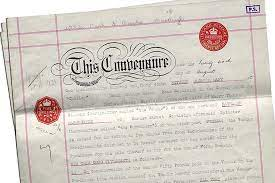As getting a foot on the property ladder becomes ever more difficult, many would-be homeowners are turning to other ways to achieve their dream. One such way is to join with others to buy a home, whether that be friends, a partner or relatives, in a joint ownership arrangement. In this case, it is prudent to have a Deed or Declaration of Trust in place.
What is a Deed of Trust?
This is a legal document usually created when multiple people have a stake in a property. It aims to protect and safeguard each person’s investment by outlining the division of ownership of the property. It stipulates how things will be divided up in the future, as well as what happens if one party wants to be bought out. The document aims to protect everyone’s interest in the property, avoiding disputes and disagreements further down the line. The Land Registry simply records the names of those who own the property, while the Declaration of Trust details the specific arrangements and percentage shares.
When might a Declaration of Trust be used?
The Trust Deed is routinely used when people are buying a property as Tenants in Common, that is, a situation in which people have contributed different amounts to the purchase of a property. The Deed is not usually required in the case of Joint Tenants – those who own a house equally. When you buy property with other people, you are asked if you want to be listed as Joint Tenants or Tenants in Common.
The most common situations in which a Declaration of Trust is used are when an unmarried couple buys a property together. They do not have the same legal rights and protection as a married couple and so the Deed can be used to detail their entitlements property-wise should the relationship end.
It is also used in the case of friends purchasing together, which, according to the BBC, is a growing trend.

It is also useful in a situation where a person contributes to a property but does not have their name on the mortgage. The document would afford them some protection of their interests too. They may be unable to have their name on the mortgage due to a poor credit rating, or because they moved into the house after the mortgage was arranged. Whatever the circumstances, the Deed will protect their investment too.
What information is included in the Deed?
The document is usually drawn up by a qualified conveyancing solicitor, such as Sam Conveyancing, and is tailored to the specific situation. Most Declarations of Trust tend to include:
-How much each party has contributed to the property purchase.
-The percentage of the property each party will own.
-The amount each party will pay towards mortgage repayments and other costs.
-If the property is sold, how much will each party get.
Those involved can also add any other details and eventualities to be covered.

Is the Deed legally binding?
Provided that it has been drawn up as a formal legal document, usually by a solicitor, has been signed freely and willingly by all parties and has been witnessed, then it is legally binding. Changes can only be made with the agreement of all parties.



